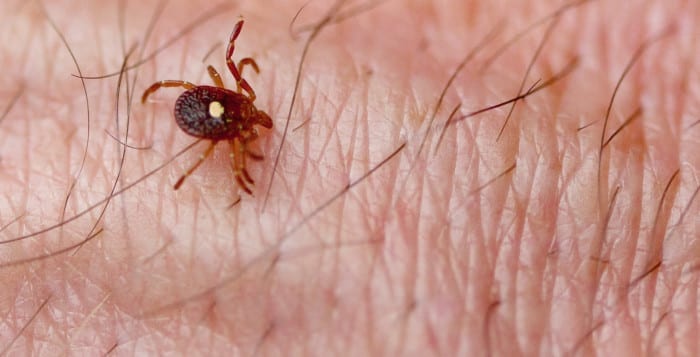Local Tick Expert Shares Advice as Residents Begin to Venture Outdoors
Many Illnesses Carried by Ticks Share Symptoms with COVID-19
With summer close by and as New York State continues to relax shutdown restrictions, residents will naturally want to get some fresh air. But while open spaces like parks and nature preserves provide a temporary reprieve from the COVID-19 pandemic, they are also home to ticks. These arachnids can carry Lyme disease and other serious tick-borne illnesses. Experts say this is the time when ticks are most active and when their numbers increase.
“We have already passed a month of tick activity here on Long Island,” said Jorge Benach, distinguished Toll professor of Molecular Genetics & Microbiology and Pathology at the Renaissance School of Medicine, Stony Brook University. “With minimal contact because people were staying indoors due to the pandemic, we have seen less cases.”
Benach said that could change in the coming summer months, especially with an already large tick count this year. Currently, we are entering the second phase of tick season, which is when the arachnids are in the nymph stage and are harder to spot.
“For some reason Long Island has a heavy population of ticks,” Benach said. “It has the perfect environment for them and they really thrive.”
Three species of ticks call Long Island home. The deer tick can carry Lyme disease, anaplasmosis and other illnesses, while American dog tick can carry Rocky Mountain spotted fever. The lone star tick can transmit tularemia and ehrlichiosis.
“The lone star tick, we believe, is the most aggressive of the three species, and we didn’t know it existed until 1980,” the distinguished professor said. “And then it somehow found its way to Long Island.”
A 2019 study, headed by Benach and Rafal Tokarz, assistant professor of epidemiology at Columbia University, with co-authors from SBU and Columbia, found prevalence of multiple agents capable of causing human disease that are present in three species of ticks in Long Island.
Another concern this season is that tick-borne illnesses like Lyme disease and anaplasmosis have symptoms that overlap with those of COVID-19, including fever, muscle aches and respiratory failure, but without persistent coughing.
“It is true that they have overlap in the initial symptoms, but once you get past that first stage it should be easier to diagnose if that person has a tick-borne illness,” Benach said.
Tick-borne diseases are usually treated with antibiotics. The effects range from mild symptoms that can be treated at home to severe infections that if left untreated can lead to death in rare cases.
The distinguished professor stressed the need for people to be aware of ticks when they are in certain areas outdoors.
Repellents and wearing long-sleeve pants and shirts can be good deterrents for ticks. Other tips include walking along the center of trails, washing and drying clothing when you come home and keeping pets from areas that could be tick infested.
Benach said there is a misconception that humans get ticks from dogs. Instead, it is more likely one gets a tick from being in the same space as your dog.
“You should be checking yourself, and if you spot a tick get it off as soon as possible,” he said. “If you develop any symptoms or illness contact your doctor.”







